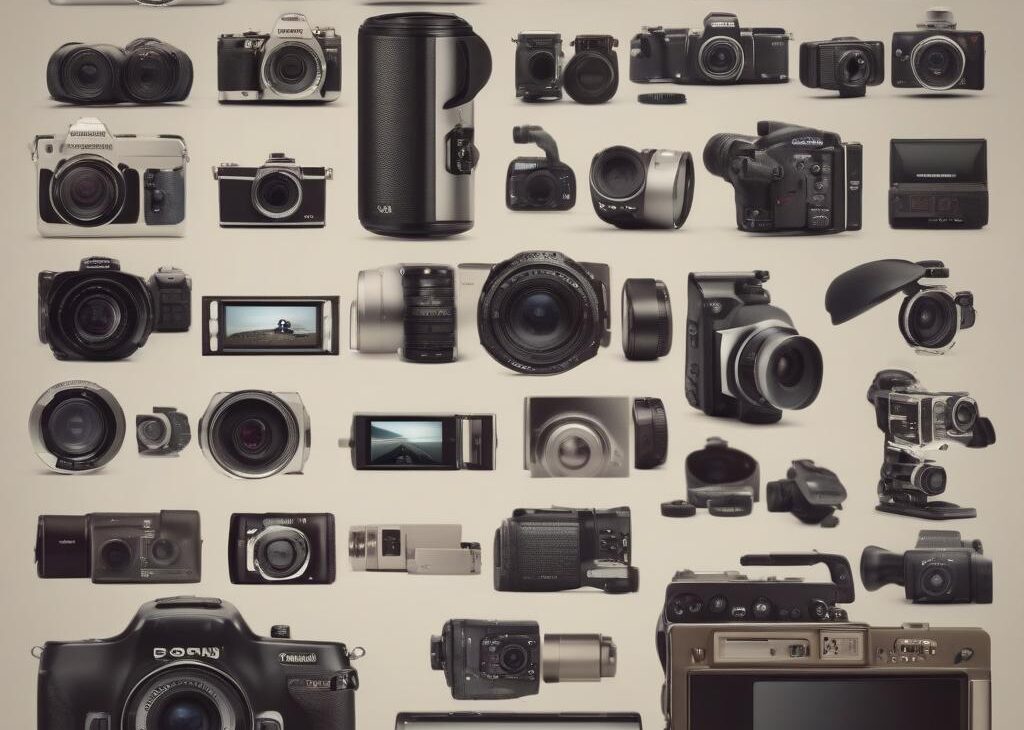-
Table of Contents
- The Evolution of HD: Today’s High-Definition Technology
- The Rise of HD Technology
- The Impact of HD in Various Industries
- 1. Television and Film
- 2. Gaming
- 3. Photography and Videography
- The Future of HD Technology
- 1. 4K and 8K Resolution
- 2. HDR (High Dynamic Range)
- 3. Streaming and On-Demand Services
- Q&A
- 1. What is the difference between HD and SD?
- 2. How does HD technology improve the gaming experience?
- 3. What is the future of HD technology?
- 4. How does HD technology benefit photographers and videographers?
- 5. Will HD technology become obsolete?
- Summary
High-definition (HD) technology has revolutionized the way we consume and experience visual content. From television screens to digital cameras, HD has become the standard for delivering crystal-clear images and immersive viewing experiences. In this article, we will explore the advancements in HD technology, its impact on various industries, and its future prospects.
The Rise of HD Technology
HD technology emerged as a response to the growing demand for higher quality visual content. Traditional analog systems, such as standard-definition (SD) television, were limited in their ability to deliver sharp and detailed images. HD technology, on the other hand, offered a significant improvement in resolution, color accuracy, and overall image quality.
The introduction of HD television sets in the early 2000s marked a turning point in the entertainment industry. Consumers were captivated by the lifelike images and vibrant colors that HD TVs could deliver. This led to a surge in demand for HD content, prompting content creators and broadcasters to adapt to this new standard.
The Impact of HD in Various Industries
1. Television and Film
The television and film industry has been greatly influenced by the advent of HD technology. Filmmakers now have the ability to capture and showcase their creations in stunning detail, allowing viewers to experience movies and TV shows like never before. The rise of streaming platforms, such as Netflix and Amazon Prime Video, has further accelerated the demand for HD content.
Moreover, sports broadcasting has also benefited from HD technology. With HD cameras capturing every intricate detail of the game, viewers can enjoy a more immersive and engaging experience. Slow-motion replays and close-ups of key moments have become an integral part of sports broadcasts, enhancing the overall viewing experience.
2. Gaming
The gaming industry has witnessed a significant transformation with the introduction of HD technology. High-definition graphics have become a standard feature in modern video games, enabling players to explore visually stunning virtual worlds. The increased resolution and improved visual effects have made gaming more realistic and captivating.
Furthermore, the rise of virtual reality (VR) gaming has further pushed the boundaries of HD technology. VR headsets, equipped with HD displays, provide users with an immersive gaming experience that blurs the line between the real and virtual worlds.
3. Photography and Videography
HD technology has also revolutionized the field of photography and videography. Digital cameras with HD capabilities allow photographers and videographers to capture intricate details and vibrant colors with exceptional clarity. This has opened up new possibilities for professionals and enthusiasts alike, enabling them to create visually stunning content.
Additionally, the rise of social media platforms and video-sharing websites has increased the demand for high-quality visual content. HD videos and images are more likely to grab the attention of viewers, leading to higher engagement and sharing.
The Future of HD Technology
As technology continues to advance, the future of HD looks promising. Here are some key developments to watch out for:
1. 4K and 8K Resolution
4K resolution, also known as Ultra HD, has already gained popularity in the consumer market. With four times the number of pixels as HD, 4K displays offer even sharper and more detailed images. The next frontier is 8K resolution, which provides an even higher level of detail. As the demand for higher resolution content grows, we can expect 8K displays to become more prevalent in the coming years.
2. HDR (High Dynamic Range)
HDR technology enhances the contrast and color accuracy of images, resulting in a more realistic and vibrant visual experience. HDR-enabled displays can reproduce a wider range of colors and brightness levels, allowing for more lifelike images. This technology is already being adopted in televisions, smartphones, and digital cameras, and its popularity is expected to increase in the future.
3. Streaming and On-Demand Services
The rise of streaming platforms and on-demand services has transformed the way we consume content. With the increasing availability of high-speed internet connections, streaming services can deliver HD and even 4K content directly to our devices. This trend is likely to continue, with more platforms investing in high-quality content and improving their streaming capabilities.
Q&A
1. What is the difference between HD and SD?
HD stands for high-definition, while SD stands for standard-definition. HD offers a higher resolution and better image quality compared to SD. HD displays have a minimum resolution of 1280×720 pixels, while SD displays typically have a resolution of 720×480 pixels.
2. How does HD technology improve the gaming experience?
HD technology enhances the gaming experience by providing higher resolution graphics, improved visual effects, and more realistic gameplay. It allows gamers to enjoy visually stunning virtual worlds with greater detail and immersion.
3. What is the future of HD technology?
The future of HD technology lies in higher resolutions, such as 4K and 8K, as well as advancements in HDR technology. Streaming and on-demand services will continue to play a significant role in delivering high-quality content to consumers.
4. How does HD technology benefit photographers and videographers?
HD technology allows photographers and videographers to capture intricate details and vibrant colors with exceptional clarity. It enables them to create visually stunning content that stands out in a crowded digital landscape.
5. Will HD technology become obsolete?
While newer technologies may emerge in the future, HD technology is likely to remain relevant for years to come. The demand for high-quality visual content continues to grow, and HD displays are widely adopted in various industries.
Summary
HD technology has transformed the way we consume and experience visual content. From television and film to gaming and photography, HD has become the standard for delivering crystal-clear images and immersive experiences. The future of HD technology looks promising, with advancements in resolution, HDR, and streaming services. As technology continues to evolve, HD will continue to play a significant role in shaping our visual experiences.




